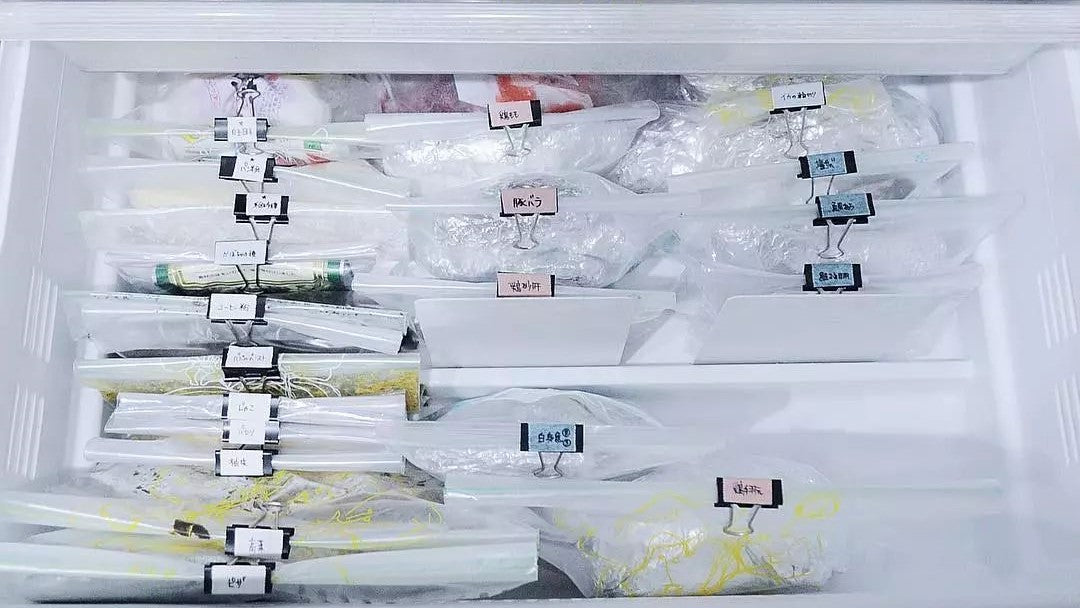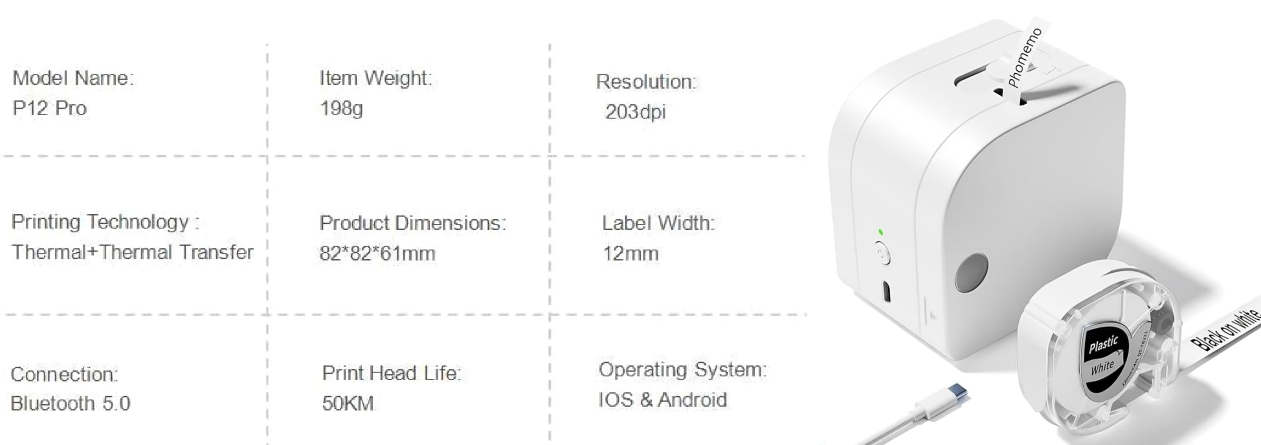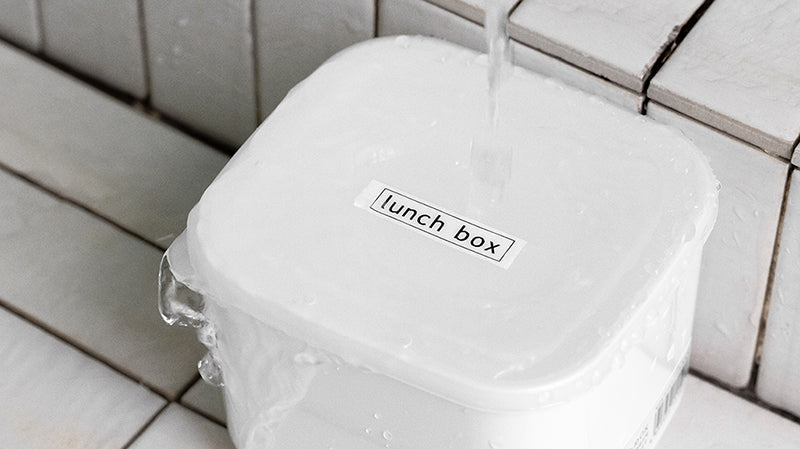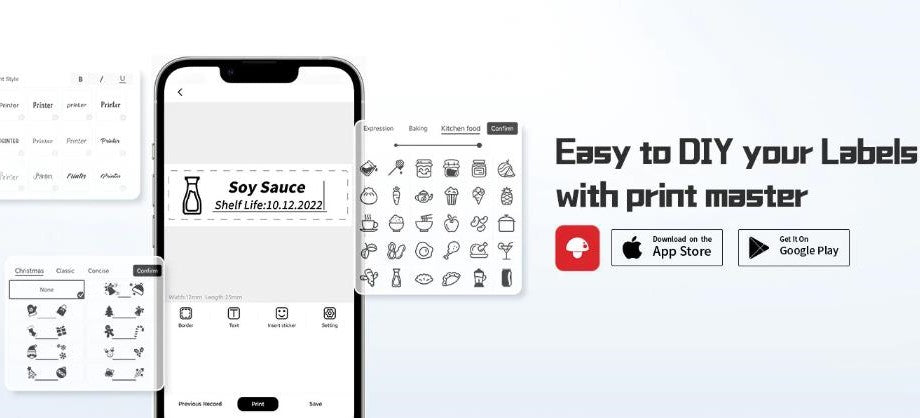In the cooking world, the kitchen is like a fun playground. Every dish you make shows how much you love cooking. If you're a big fan of cooking at home, you probably cook a lot and have tons of ingredients in your kitchen.
When your fridge has lots of cooked foods and ingredients, not having labels can make foods confusing. You may don’t know what the frozen food is until it defrosted. Frozen food labels help you know quickly what you are having and when they were made, so you won't get confused. Labels for frozen food make it easier to organize and find what you need.

What Are Suggested Storage Times For Frozen Foods?
To help you navigate the proper storage times for various foods, we've included the Cold Food Storage Chart from foodsafety.gov. This comprehensive chart recommended storage times for a wide range of foods in both the refrigerator and freezer. By following these guidelines, you can minimize the risk of foodborne illness and ensure that your meals are not only delicious but also safe to eat.
|
Food Type |
Type |
Refrigerator [40°F (4°C) or below] |
Freezer [0°F (-18°C) or below] |
|
Salad |
Egg, chicken, ham, tuna, and macaroni salads |
3 to 4 days |
Does not freeze well |
|
Hot dogs |
Opened package |
1 week |
1 to 2 months |
|
Unopened package |
2 weeks |
1 to 2 months |
|
|
Luncheon meat |
Opened package or deli sliced |
3 to 5 days |
1 to 2 months |
|
Unopened package |
2 weeks |
1 to 2 months |
|
|
Bacon and sausage |
Bacon |
1 week |
Bacon: 1 month |
|
Sausage, raw, from chicken, turkey, pork, or beef |
1 to 2 days |
1 to 2 months |
|
|
Sausage, fully cooked, from chicken, turkey, pork, or beef |
1 week |
1 to 2 months |
|
|
Sausage, purchased frozen |
After cooking, 3-4 days |
1-2 months from date of purchase |
|
|
Hamburger, ground meats and ground poultry |
Hamburger, ground beef, turkey, chicken, other poultry, veal, pork, lamb, and mixtures of them |
1 to 2 days |
3 to 4 months |
|
Fresh beef, veal, lamb, and pork |
Steaks |
3 to 5 days |
4 to 12 months |
|
Chops |
3 to 5 days |
4 to 12 months |
|
|
Roasts |
3 to 5 days |
4 to 12 months |
|
|
Ham |
Fresh, uncured, uncooked: |
3 to 5 days |
6 months |
|
Fresh, uncured, cooked |
3 to 4 days |
3 to 4 months |
|
|
Cured, cook-beforeeating, uncooked |
5 to 7 days or “use by” date |
3 to 4 months |
|
|
Fully-cooked, vacuumsealed at plant, unopened |
2 weeks or “use by” date |
1 to 2 months |
|
|
Cooked, storewrapped, whole |
1 week |
1 to 2 months |
|
|
Cooked, storewrapped, slices, half, or spiral cut |
3 to 5 days |
1 to 2 months |
|
|
Country ham, cooked |
1 week |
1 month |
|
|
Canned, labeled "Keep Refrigerated," unopened |
6 to 9 months |
Do not freeze |
|
|
Canned, shelf-stable, opened Note: An unopened, shelf-stable, canned ham can be stored at room temperature for 2 years. |
3 to 4 days |
1 to 2 months |
|
|
Prosciutto, Parma or Serrano ham, dry Italian or Spanish type, cut: 2 to 3 months |
2 to 3 months |
1 month |
|
|
Fresh poultry |
Chicken or turkey, whole |
1 to 2 days |
1 year |
|
Chicken or turkey, pieces |
1 to 2 days |
9 months |
|
|
Fin Fish |
Fatty Fish (bluefish, catfish, mackerel, mullet, salmon, tuna, etc.) |
1 - 3 Days |
2 - 3 Months |
|
Lean Fish (cod, flounder, haddock, halibut, sole, etc.) |
6 - 8 Months |
||
|
Lean Fish (pollock, ocean perch, rockfish, sea trout.) |
4 - 8 Months |
||
|
Shellfish |
Fresh Crab Meat |
2 - 4 Days |
2 - 4 Months |
|
Fresh Lobster |
2 - 4 Days |
2 - 4 Months |
|
|
Live Crab, Lobster |
1 day |
Not recommended |
|
|
Live Clams, Mussels, Oysters, and Scallops |
5 - 10 Days |
Not recommended |
|
|
Shrimp, Crayfish |
3 - 5 Days |
6 - 18 Months |
|
|
Shucked Clams, Mussels, Oysters, and Scallops |
3 - 10 Days
|
3 - 4 Months |
|
|
Squid |
1 - 3 Days |
6 - 18 Months |
|
|
Eggs |
Raw eggs in shell |
3 to 5 weeks |
Do not freeze in shell. Beat yolks and whites together, then freeze. |
|
Raw egg whites and yolks Note: Yolks do not freeze well |
2 to 4 days |
12 months |
|
|
Raw egg accidentally frozen in shell Note: Toss any frozen eggs with a broken shell |
Use immediately after thawing |
Keep frozen, then refrigerate to thaw |
|
|
Hard-cooked eggs |
1 week |
Do not freeze |
|
|
Egg substitutes, liquid, unopened |
1 week |
Do not freeze |
|
|
Egg substitutes, liquid, opened |
3 days |
Do not freeze |
|
|
Egg substitutes, frozen, unopened |
After thawing, 1 week or refer to “use by” date |
12 months |
|
|
Egg substitutes, frozen, opened |
After thawing, 3 to 4 days or refer to “use by” date |
Do not freeze |
|
|
Casseroles with eggs |
After baking, 3 to 4 days |
After baking, 2 to 3 months |
|
|
Eggnog, commercial |
3 to 5 days |
6 months |
|
|
Eggnog, homemade |
2 to 4 days |
Do not freeze |
|
|
Pies: Pumpkin or pecan |
After baking, 3 to 4 days |
After baking, 1 to 2 months |
|
|
Pies: Custard and chiffon |
After baking, 3 to 4 days |
Do not freeze |
|
|
Quiche with filling |
After baking, 3 to 5 days |
After baking, 2 to 3 months |
|
|
Soups and stews |
Vegetable or meat added |
3 to 4 days |
2 to 3 months |
|
Leftovers |
Cooked meat or poultry |
3 to 4 days |
2 to 6 months |
|
Chicken nuggets or patties |
3 to 4 days |
1 to 3 months |
|
|
Pizza |
3 to 4 days |
1 to 2 months |
What Kind of Label Maker Should I Use?
Instead of writing labels by hand, which takes time and might not look nice, lots of people now like using label makers. A handheld label maker can print adhesive labels directly, and then you stick them on foods. Label makers are great tools in the kitchen because they are easy to use, flexible, and handy. Plus, the labels they make look neat and beautiful. The Phomemo P12 Pro is just the right product for managing food and organizing your home every day.

What Printing Technologies Are Used?
The Phomemo P12 Pro employs both thermal printing and thermal transfer printing technologies. It doesn’t need for ink cartridges.They stick well and won't fade, even if they get wet or oily. Even in low-temperature environments like the refrigerator, they maintain excellent label performance, keeping your food safe and your family healthy!

What Type of Labels Should I choose?
When it comes to long-lasting labels that can survive the greasy kitchen environment or the cold conditions of a fridge, Phomemo's thermal labels are the go-to choice. With patented coating and thermal transfer technology, this type of labels boast waterproof, oil-resistant, scratch-proof, and temperature-resistant features. They not only stick securely but also peel off cleanly, leaving no residue behind. Keep your kitchen organized clean!

How To Print Labels From Your Phone?
Using the Phomemo P12 Pro to create custom labels for food is super easy. You can connect it to your smartphone using Bluetooth. It works with both Android and iOS. The app that comes with it has lots of different label designs for everyday stuff. You can use them right away without having to make your own, which saves time and effort.

Conclusion
When life gets busy, having a well-organized kitchen can save you time and effort. The portable label printer Phomemo P12 Pro helps you manage your kitchen better. It makes things more organized and neat, so cooking is easier. Plus, it helps you and your family enjoy healthier and tastier meals.











